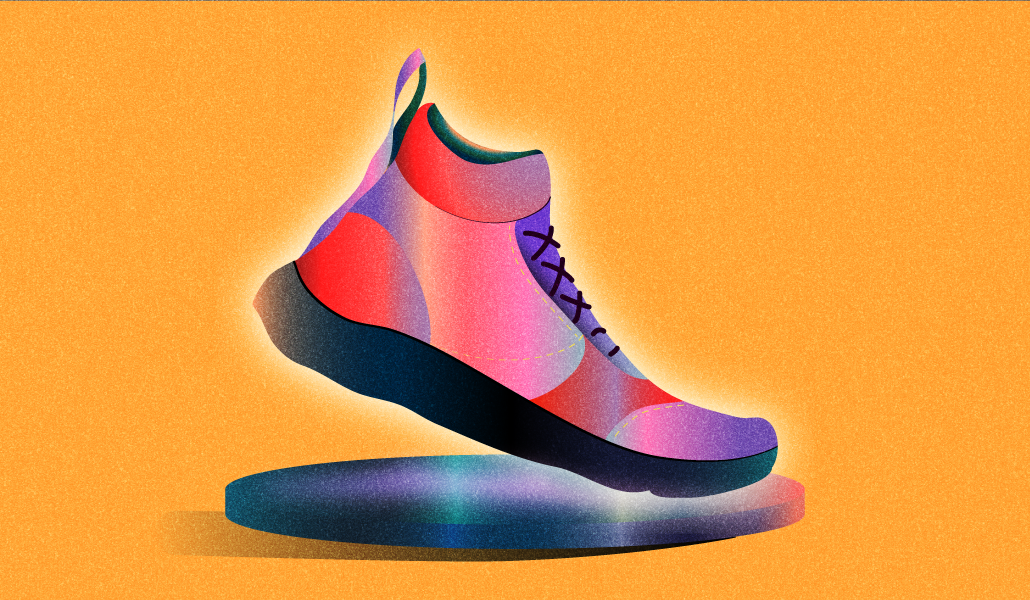Why 2023 was the year of the dad shoe

Chunky heels, large toe boxes and big laces: The so-called “dad” shoe was back in full swing in 2023.
Thanks to the pandemic, retro-style footwear brands have enjoyed their biggest resurgence in years. Over the past few years, sales of running shoe brands like New Balance and Asics soared to new heights, especially on resale sites and marketplaces. On top of that, swaths of consumers, many of whom worked from home, traded out their heels and dress shoes for slippers and slides. Once-popular brands like Ugg, Birkenstock and Crocs got another chance at the spotlight with new styles, new colors and pop culture moments.
Today, interest in these silhouettes refuses to fade. In fact, it’s getting stronger. New Balance and Asics hit new sales records for Black Friday at StockX. In October, Hoka’s parent company Deckers Brands achieved record quarterly revenue, thanks to $424 million in sales from the brand. In November, On reached its highest gross profit margin since its IPO two years ago. Sales of New Balance are up 15% year-over-year at reseller Impossible Kicks, and searches for “Adidas Samba” jumped 200% over the past 12 months in the United States, according to Google Trends.
Trends change quickly in footwear as brands compete for attention. But, retro-style shoes have managed to stay on top thanks to a unique combination of a “maximalist” aesthetic, comfort and buzzy collaborations, sources say. As Matt Powell, founder of the consultancy Spurwink River, put it, “if the product is fresh looking, if it’s not a product that’s been in the market for a long time, I think there’s a tremendous amount of interest from the consumer.”
At the same time, analysts told Modern Retail that brands can’t cruise on this nostalgia factor forever and must continue to innovate.
Right now, running shoes are a game of offering comfort over style, Beth Goldstein, footwear and accessories analyst at Circana, told Modern Retail. “The soles are higher and higher than before,” she said. “Everybody wants to be faster, lighter, more cushioned, comfortable.”
“The comfort element has kind of become the fashion element,” Goldstein said. “It’s taking what you used to hope for when you put on a shoe but not be visible, and putting it on the outside of the shoe.”
Ad position: web_incontent_pos1
Brands are increasingly pointing to these qualities in their advertising, with On mentioning its “patented cushioning system” and Brooks Running saying that its shoes are “made to conquer the road.” Brands that aren’t typically classified as “dad” shoes, such as Ugg, are adding platforms to shoes in hopes of reaching new customers.
Today, runners and non-runners alike are slipping on chunky, comfortable shoes to head to the grocery store or the movies. Even luxury brands like Balenciaga and Chanel have started bringing performance elements to their footwear, reversing a trend in which the mainstream fashion world took cues from the designer world.
Hoka and On, in particular, brought something new to the running space because their products “are not like anything else that’s in the market,” Powell said. Hoka excels in comfort, he explained, which may increase its appeal for older crowds.
“The product actually offers a solution for consumers if you have a knee, hip, ankle problem — and many people have said that those injuries are alleviated by wearing a maximal cushioning shoe like Hoka,” Powell said.
Notably, it’s not just older shoppers wearing these shoes. Hoka is popular among Gen Z and Millennials, too. In May, Deckers’ CEO specifically cited “momentum with younger consumers in the U.S.” as a sales driver for Hoka. The hashtag #HOKA has 610.3 million views on TikTok, while the hashtag #OnRunning has 421.3 million.
Ad position: web_incontent_pos2
The celebrity factor adds some credence, as well. A-listers including Gwyneth Paltrow and Reese Witherspoon have been spotted wearing Hoka shoes over the past few years, while Hailey Bieber and Kendall Jenner have been photographed wearing the New Balance 550. Rihanna wore a pair of red Salomon sneakers during her Super Bowl performance.
Running shoe companies have also paired up with buzzy streetwear brands or designers to bring their products to more audiences. New Balance has worked with JJJJound and Aimé Leon Dore, while Hoka has rolled out shoes with Moncler.
Collaborations have been key for many of these retro-style brands, a large number of which also fall into the “Y2K resurgence” bucket. Crocs reported record quarterly revenues of more than $1 billion this summer after rolling out shoes with popular franchises like the NBA, Minecraft and Taco Bell. Ugg x Madhappy products have historically sold for twice their retail price on StockX, Drew Haines, StockX’s director of sneakers and collectibles, told Modern Retail.
Powell and Goldstein expect interest in dad shoes and Y2K brands to continue into 2024, although each acknowledged that the pace of growth might slow next year. With this in mind, Goldstein said, innovation will be even more key next year. Even though the biggest footwear styles are retro, she said, looking to the future is important.
For instance, when it comes to brands bringing back popular styles — like Adidas with the Gazelle and the Samba — “they need to control the supply and demand,” Goldstein said. “You just need to be careful not to flood the market with it too much, get people sick of it.”
As for running shoes, brands need to figure out how to differentiate their products from one another, she added. “I think it’ll need to be a combination of strategies to keep up the growth.”

